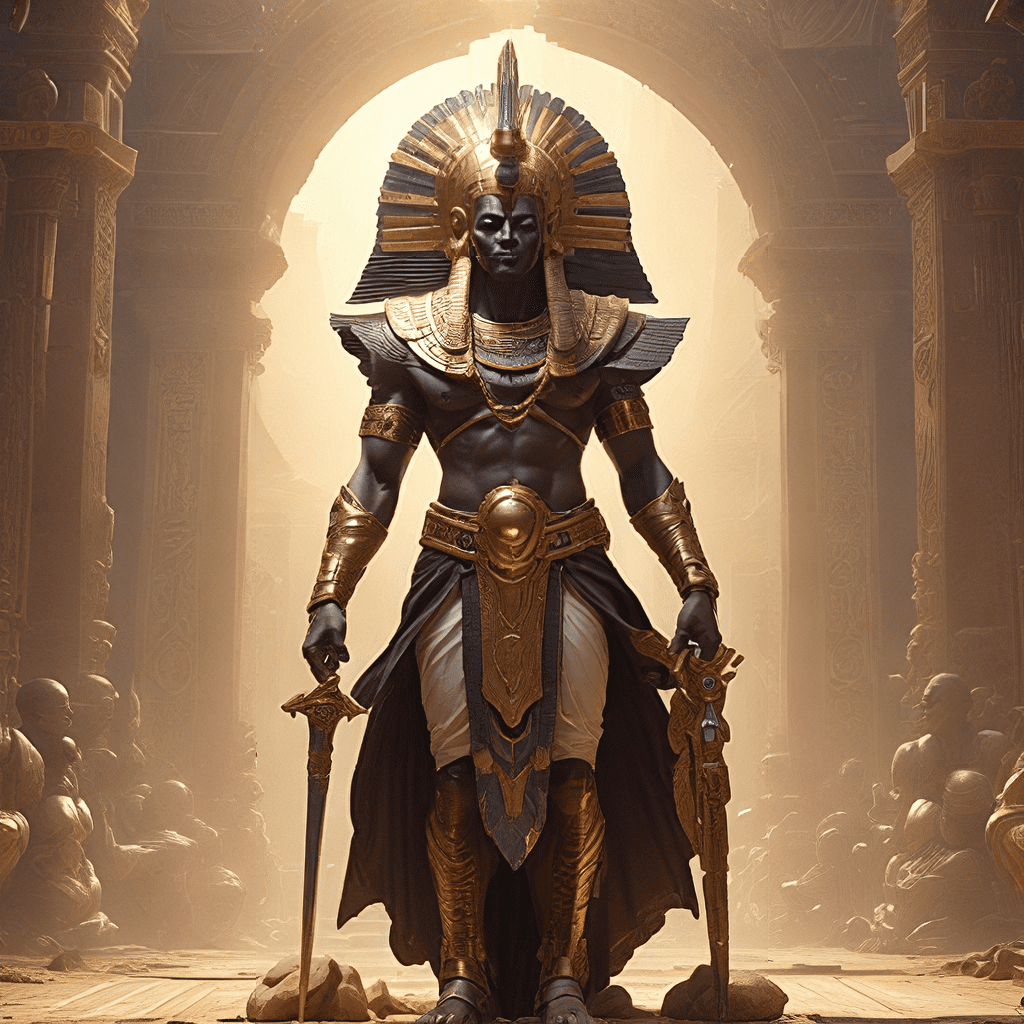Osiris: The God of the Cycle of Life and Death
In the rich tapestry of ancient Egyptian mythology, Osiris stands as a central figure, embodying the profound and eternal cycle of life, death, and rebirth. As the god of the underworld, he held dominion over the afterlife, guiding souls on their journey to the next realm. Osiris’s story is one of betrayal, death, and resurrection, mirroring the natural processes of decay and renewal that shaped the Egyptian worldview.
1. Introduction: The Significance of Osiris in Egyptian Mythology
Osiris’s significance in Egyptian mythology is immeasurable. He played a pivotal role in their understanding of the world and their place in it. His story provided a framework for their beliefs about death, the afterlife, and the cyclical nature of existence. His myth was a source of comfort and hope, offering assurance that even in death, life could continue in a transformed state. The Egyptians believed that Osiris’s life, death, and resurrection mirrored the annual cycle of the Nile River, which brought life-giving waters and sustained their civilization.
2. Osiris’s Role as King of Egypt
Osiris, the son of Geb (the earth god) and Nut (the sky goddess), was revered as the first king of Egypt. He was credited with bringing civilization to the land, teaching agriculture, law, and the arts to his people. As a benevolent ruler, he was known for his justice and wisdom. He ruled with compassion, advocating for the well-being of his subjects. His reign was a golden age, remembered for its prosperity and peace.
3. Osiris’s Sibling Murder and Resurrection
Tragedy struck Osiris when his jealous brother, Set, plotted his demise. Set lured Osiris into a beautiful chest, then nailed it shut and cast it into the Nile River. Isis, Osiris’s devoted wife, discovered his body and mourned deeply. Using her magical powers, she brought him back to life. However, Set’s cruelty did not end there. He dismembered Osiris’s body, scattering the pieces across Egypt. Despite the mutilation, Isis, aided by her sister Nepthys, reunited the body parts, and through her love and magic, resurrected Osiris as the ruler of the underworld.
4. The Myth of Osiris and Isis
The love story of Osiris and Isis is one of the most enduring themes in Egyptian mythology. Isis, known for her wisdom, magic, and fierce devotion, played a crucial role in preserving Osiris’s legacy. Their love story symbolized the enduring power of love, even in the face of betrayal and death. Isis’s tireless search for Osiris’s body, her grief over his loss, and her ultimate triumph in resurrecting him demonstrates the strength and resilience of her love. The myth of Osiris and Isis is a powerful testament to the enduring power of love and the cyclical nature of life, death, and rebirth.
5. Osiris and the Underworld: Judge of the Dead
As ruler of the underworld, Osiris presided over the judgment of the dead. Every soul, upon death, faced a trial in the Hall of Two Truths, where Osiris weighed their hearts against a feather, symbolizing Maat, the goddess of truth and justice. If the heart was lighter than the feather, the soul was judged righteous and allowed to enter the afterlife. If not, the soul was devoured by the monster Ammut, signifying eternal damnation.
6. Osiris’s Association with Agriculture and the Nile
Osiris’s connection to agriculture and the Nile River was deeply rooted in Egyptian beliefs. The Egyptians believed that Osiris, through his life, death, and resurrection, embodied the annual flooding of the Nile, which brought fertile silt to the land, enabling abundant harvests. The cycle of death and rebirth was reflected in the natural world, with the Nile flooding and retreating, and with crops dying in the winter and springing back to life in the spring. The god’s association with agriculture was a source of hope and reassurance for the Egyptians, ensuring their prosperity and continued existence.
7. Osiris’s Importance in Egyptian Rituals and Beliefs
Osiris’s presence is deeply woven into the fabric of Egyptian rituals and beliefs. A major annual festival was dedicated to him, during which Egyptians celebrated his death and resurrection. Temples were built in his honor throughout Egypt, and his image adorned countless tombs, serving as a reminder of the afterlife and a source of comfort for the deceased. The Egyptians also performed various funerary rituals, such as mummification, to ensure the deceased’s journey through the underworld and their ultimate resurrection.
8. Osiris’s Symbolism: Fertility, Renewal, and the Afterlife
Osiris’s symbolism is rich and multifaceted. He represents fertility, renewal, and the cycle of life and death. His connection to the Nile River, the source of life-giving waters, reinforced his ties to agriculture and rebirth. His resurrection from death, even after being dismembered, demonstrated the triumph of life over death, providing comfort and hope to those who faced their own mortality.
9. The Cult of Osiris and its Influence
The cult of Osiris was widespread throughout ancient Egypt, influencing art, architecture, literature, and daily life. Its influence extended beyond the borders of Egypt, with elements of Osiris’s myth being adopted by other cultures, demonstrating the enduring power of his story. Osiris’s popularity and influence are a testament to the resilience of his myth and its ability to resonate across cultures and time.
10. Osiris’s Legacy: The Lasting Impact of His Myth
Osiris’s legacy is one of enduring importance. His myth remains a powerful source of inspiration and reflection for modern audiences, offering insight into ancient Egyptian beliefs and values. He continues to be a significant figure in the study of mythology and religion, providing a glimpse into the human experience of life, death, and the search for meaning.




